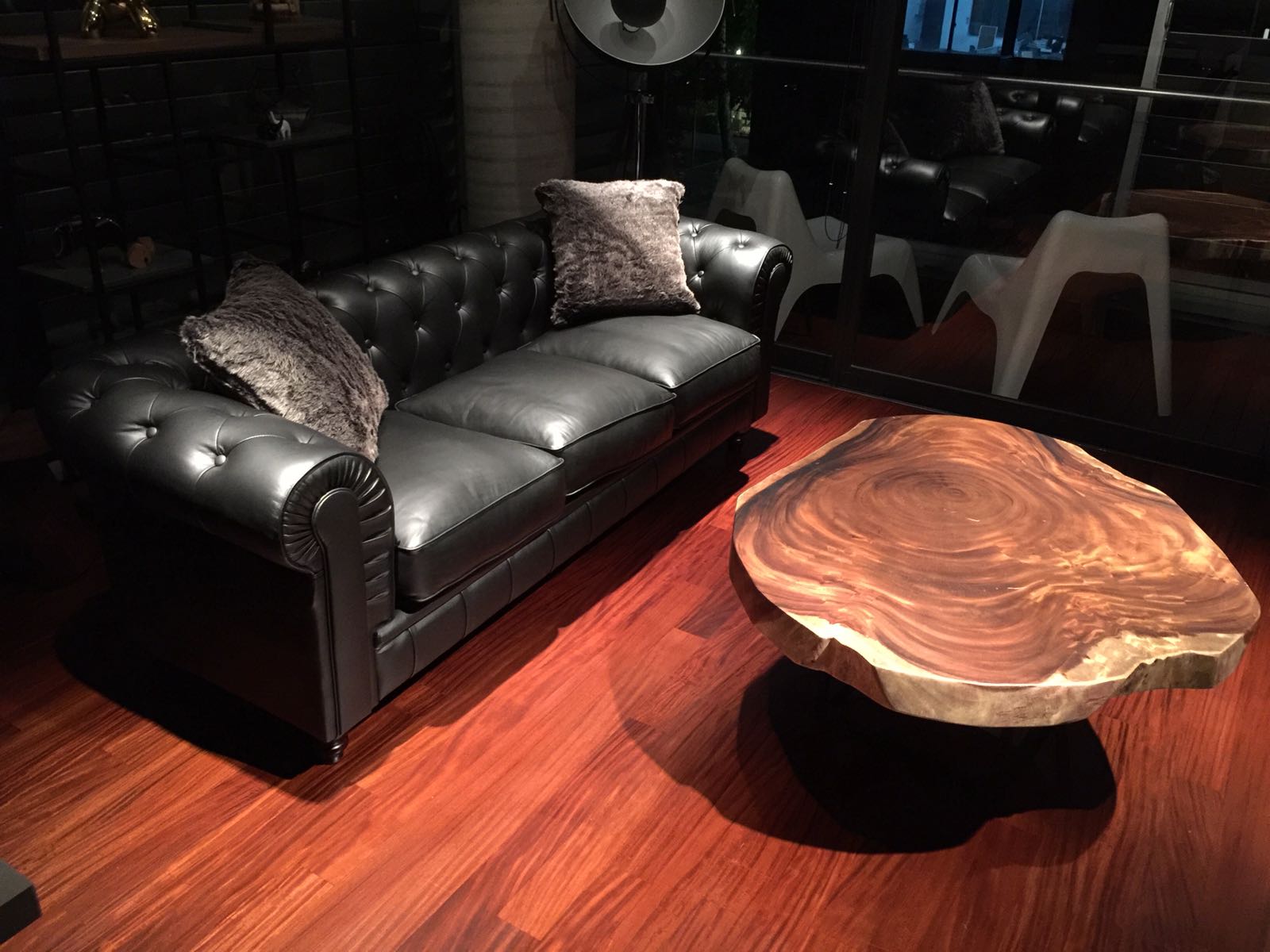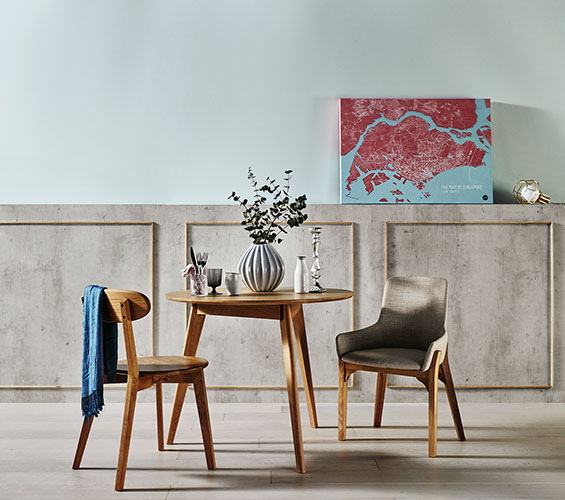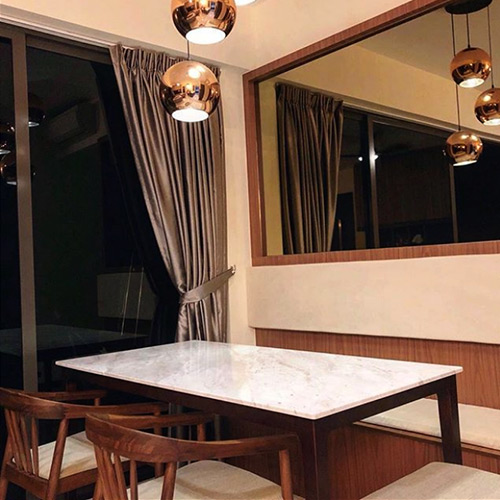11 Things to Look Out for When Shopping for Furniture!

For many people, shopping for furniture can be very stressful, but it does not have to be that way! What we have today is an easy-to-digest list to help start you off on your furniture search!
1) Always Plan Ahead!
Try to give yourself a minimum of 2 months' lead-time when sourcing out furniture for your new place! This is because, with the current COVID situation, many furniture stores are experiencing some delays in shipping! So, it always helps to plan ahead! (P.S. we are able to store your furniture for up to 6 months!)
2) Quality: Pick well-made furniture, always!
While it is tempting to buy many pieces of cheap furniture in a single purchase, more often than not, you end up with items of poor quality and sub-par durability. However, if you know what to look out for, you can find quality furniture without the hefty price tag!
To check for quality, you will need to understand how a piece of furniture is produced. While it may seem like a bit of work, the eventual satisfaction that comes with a quality piece of furniture makes it worthwhile!
For example, when we talk about sofas, here is a nifty little checklist:
- Wood type: Choose hardwood (e.g. oak, ash) over softwood (e.g. pine). While this may not seem immediately important, hardwoods out-perform softwoods by a large margin!
- Inner wooden frame: Choose Solid Wood over Plywood – this can be tricky as a sofa’s frame is under the upholstery. However! You can easily tell them apart simply by lifting the sofa up. A solid wood frame is much heavier than sofas with a plywood frame.
- Leather: Choose genuine leather over PU Leather – surely you want your couch to age beautifully with time, don’t you? With PU leather, it will crack with use, exposing the fabric underneath. Genuine leather, in contrast, becomes softer and more comfortable with age!
- Availability of Product Information: Choose transparency! A sofa retailer which is able to provide comprehensive information regarding their products will enable you to compare your choices and enable you to make the best choice!
3) Function: Do you really need those pieces of furniture? Or will it end up cluttering your space?
When shopping for furniture, you will inevitably be swayed by the outward appearance and additional features of different pieces of furniture. Sometimes, what seems to be good for your home may end up being a white elephant!
To avoid that, consider the following:
- Will it be useful? Think of furniture as a solution to an issue in your home. Any piece of furniture that you buy should solve a future/present issue, not create more!
- How suitable is it? Make sure that the piece of furniture is able to perform its intended function consistently at the showroom! This can be as simple as checking if the product’s height is a good fit for your height, for example.
4) Materials: What is your furniture made out of?
It goes without saying that different materials behave differently from each other. What does this mean? Generally speaking, most furniture is constructed from either wood, metal, stone, or a man-made alternative. Each of them has certain qualities that may float your boat!
- Wood: Natural grain, darkens with age, may warp over time
- Metal: Sturdy, stable, may rust depending on type and environment
- Stone: Natural patterns, a wide variety of colors, may be brittle
For man-made alternatives, their performance generally varies. For example, quartz is a synthetic alternative to natural stone; while it may not look as visually stunning as marble or granite, its stability and consistent patterning make it a more appealing option to a lot of people.
In any case, request material details when window-shopping so you can find out more before making a decision!
5) Comfort: Furniture is not just for décor; it is something that you have to be comfortable with using DAILY.
It is important to note that you interact with your furniture on a daily basis. It goes without saying that you should feel comfortable when using your furniture for its intended purpose!
The best way to tell if a piece of furniture gels well with your comfort level is to actually see and touch the item itself, especially in the case of sofas and mattresses. Nothing beats experiencing the piece of furniture directly!
Consider the following:
- Is it ergonomic? Is the piece of furniture designed to work with the human body? Or is something mass-produced, with little consideration to ergonomics?
- Customizable? Different people have different ideas of comfort. Does the product have options for people to choose from?
6) Style: A consistent aesthetic for your home!
Did you know that comfort can be affected by your sense of sight? If your furniture does not harmonize well with its surroundings and the surrounding pieces of furniture, more likely than not you will find it an unenjoyable experience when you are at home.
To minimize this issue, it does help to do some research or mood boarding to get a sense of what kind of aesthetic suits your home; if you can nail your mood board down early on, it can help speed up furniture shopping!
Knowing what style you like can guide you in terms of:
- Color palette: Do you prefer neutrals? Or do you prefer a more palette with higher contrast?
- Material choice: What materials are used frequently in the style of your choice? Wood? Metal? Stone?
- Type of design: Do you lean towards clean lines? Or do organic lines, like the ones from a live-edge wooden table attract you more?
7) Space: Don’t over-furnish or under-furnish, look for the sweet spot that works for YOU.
Of course, it goes without saying that the space available in your home affects the choices you make while buying furniture.
- Suitability: Is it the size of the product appropriate for the space? How much space is left over?
- Multi-functionality: Does the product have added features that make it suitable for your home? For example, does an ottoman have a storage feature?
For most Singaporeans, they have to deal with small houses and rooms. As such, it does help to prioritize, buying the most necessary pieces of furniture first!
8) Environment: Are your choices suitable for the environment of your home?
It is always important to take note of the environment of your home when considering which pieces of furniture to get. As noted earlier, different materials behave differently, and some of their pros/cons may be amplified in certain environments.
As such, it is important to know how the environment of your home can affect your furniture:
- Temperature: Heat can react adversely with the protective coating of furniture, and warp the shape of the furniture
- Humidity: High humidity can cause mold or rust to form
- Ventilation: Poor ventilation can cause mold or rust to form
- Exposure to sunlight: Extended exposure to sunlight can cause premature discoloration. It can also break down certain materials, shortening the lifespan of the product.
9) Maintenance: Knowing what to expect from your furniture choices!
Earlier, we talked about how the surroundings can affect your furniture. Knowing that you can predict the amount of maintenance you will need to put in if you choose a piece of furniture made from a certain material.
Generally speaking, these are the types of maintenance for different materials:
- Wood: Wax1-2 times monthly. Use table mats when placing wet or hot objects on the product.
- Metal: Oil regularly if the product is not stainless. Avoid extended exposure to moisture.
- Stone: For products using lighter colored stones, wipe away moisture to prevent water stains.
- Leather: Keep away from direct sunlight. Condition product as needed.
- Fabric: Dry clean if stated; otherwise, handwash, or machine wash with a laundry net. Avoid using the dryer.
Of course, do confirm the actual care instructions with the furniture retailer, as certain materials may require special care!
10) Mobility: How adaptable is a piece of furniture?
Another point of note when buying furniture is to consider how mobile a piece of furniture is with regards to layout. The mobility of a piece of furniture is mainly determined by its size, shape, and weight.
A piece of advice: it is generally easier to plan your furniture layout around the main pieces of furniture. More often than not, these items are not as mobile as they tend to be larger pieces of furniture, such as sofas, dining tables, and beds.
Beyond that, ask yourself the following questions:
- Can it be easily moved around? If the piece of furniture can be moved around easily, it can be shifted around to achieve your ideal layout!
- Can it be matched with different styles? Will that piece of furniture look out of place in another layout, or with furniture of other styles?
- Will it become obsolete in your home? If the piece of furniture has an extremely specific function, will it stay relevant in your home in the future?
11) Lifespan: Will it last?
Last but definitely not least, it would not be a stretch to say that most people would want a piece of furniture to last for a long time. After all, furniture is an investment, is it not?
To bring it back to the beginning, the longevity of a piece of furniture is very much affected by the quality of its make. Beyond that, your daily interactions with your furniture can help extend its lifespan, through proper use and maintenance. To put it simply, if you love your furniture and show it, they will love you back!



